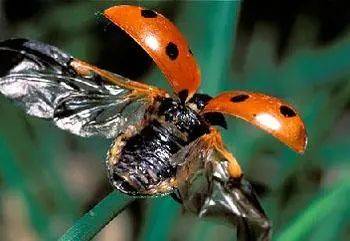
Beetles, belonging to the order Coleoptera, are one of the most diverse groups of insects in the world. Characterized by their hard, protective forewings known as elytra, these insects have evolved a unique structure that not only serves as a shield but also plays a crucial role in their survival and adaptation to various environments.

Elytra are the hard, leathery forewings of beetles, which are typically folded over the abdomen when at rest. Unlike the delicate wings of many other insects, elytra are made of a tough, keratinous material that provides excellent protection against predators and environmental stresses. The elytra cover the delicate hindwings, which are used for flying.

The evolution of elytra is believed to have occurred around 300 million years ago, during the Carboniferous period. This adaptation allowed beetles to thrive in a wide range of habitats, from forests to deserts, and from the ocean floor to mountain peaks. The diversity of elytra is remarkable, with variations in size, shape, and coloration that reflect the beetles' ecological niches and evolutionary history.

The primary function of elytra is to protect the beetle's body from predators and environmental stresses. The hard, keratinous material of the elytra is resistant to punctures and tears, making it an effective shield. Additionally, the elytra can help regulate the beetle's body temperature by reflecting sunlight and providing insulation.
In terms of structure, elytra are composed of several layers. The outer layer is the cuticle, which is a tough, waterproof material. Beneath the cuticle lies the chitin layer, which provides additional strength and flexibility. The innermost layer is the epidermis, which contains the cells that produce the keratinous material.

Elytra play a crucial role in the behavior of beetles. The hard shell allows beetles to move through dense vegetation without damaging their wings, and it also provides a platform for sensory organs, such as antennae and palps, which are essential for finding food and mates. Additionally, the distinctive patterns and colors of elytra can serve as a form of camouflage or aposematism, warning predators of the beetle's toxicity or unpalatability.

Elytra are an important feature used in the classification of beetles. The size, shape, and pattern of the elytra can help taxonomists identify and categorize different species within the Coleoptera order. For example, the elytra of scarab beetles are typically elongated and flattened, while those of leaf beetles are often narrow and elongated.

As a group, beetles are highly sensitive to environmental changes, and their elytra are often the first line of defense against predators and other threats. Conservation efforts aimed at preserving beetle populations and their habitats are essential for maintaining the health of ecosystems. Additionally, research on elytra can provide valuable insights into the evolutionary history and adaptation of beetles.

In conclusion, elytra are a remarkable adaptation that has allowed beetles to become one of the most successful groups of insects on Earth. Their unique structure not only provides protection but also influences the behavior and classification of beetles. As we continue to study these fascinating creatures, the role of elytra in the lives of beetles will undoubtedly continue to be a subject of interest and research.